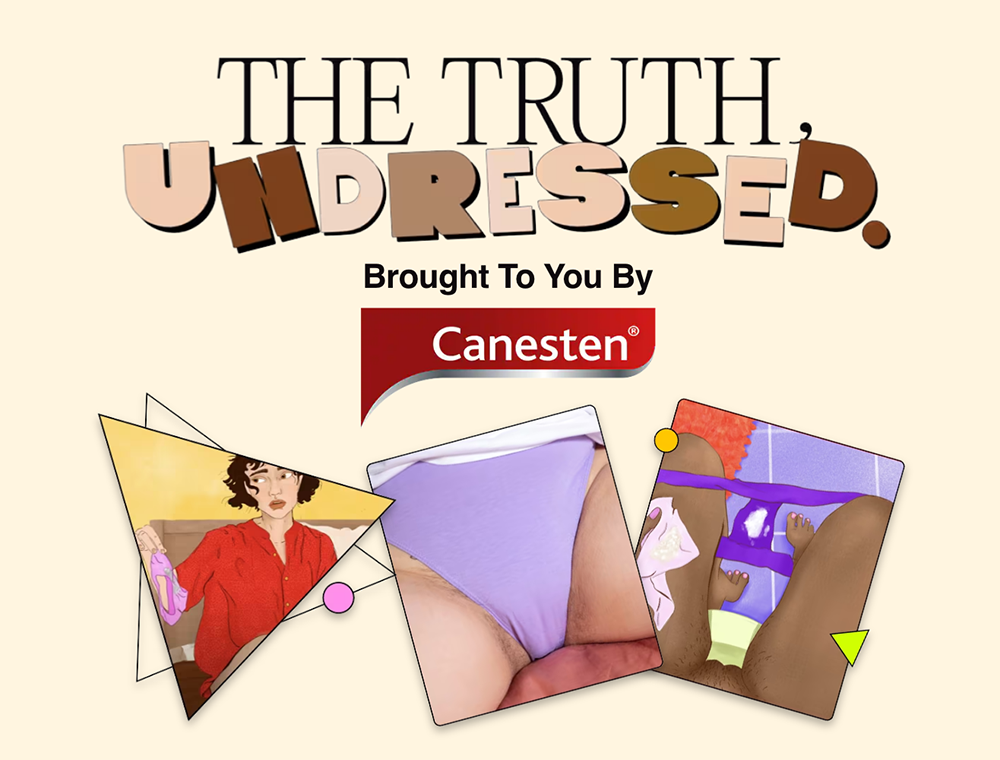What is clotrimazole used for?
Clotrimazole is an antifungal medicine used to treat skin infections caused by a fungus (yeast). These types of infection can occur in and on various parts of the body, including your skin, mouth and genitals.
Clotrimazole works by stopping the growth of fungi and helping to clear the infection. It does this by blocking the production of ergosterol – a substance that fungi need to stay healthy.
Without ergosterol, the fungi’s cell membrane becomes damaged, making it difficult for them to survive. This then helps to clear the infection.
For this reason, treatments containing clotrimazole like Canesten® Cream offer an effective way of not only stopping fungal infections but also relieving symptoms, such as itching and soreness, often within a few days.
What does clotrimazole treat?
Clotrimazole can be used to treat a wide variety of fungal infections, including:
- Athlete’s foot: a common fungal skin infection that affects the feet, often causing itchy white patches to appear between your toes.
- Ringworm: a fungal infection that, despite its name, isn’t caused by worms. It’s characterised by red, circular rashes on the skin.
- Fungal nail infection: a condition that usually affects toenails and causes them to become brittle, discoloured or thicker than usual.
- Fungal nappy rash: a common fungal infection that affects babies. It shows up as red patches on the baby’s bottom and can cause sore, hot, scaly and dry skin.
- Sweat rash (intertrigo): a common skin condition that occurs in areas where your skin rubs together, causing redness and irritation, especially in areas that are warm, moist or don’t get much airflow.
- Fungal ear infections: a fungal infection that usually only affects the ear canal. It can be brought on by scratching your ear to remove water, shampoo or soap, causing it to become inflamed.
- Thrush: a common yeast infection that affects both men and women, though thrush is more common in women.5 The affected areas usually include the vagina, the area around the vagina, breasts and nipples; male thrush can affect the end of the penis.
Keep in mind that the right dose and way to use clotrimazole can change based on the type of fungal infection you’re dealing with. Sometimes, it may also be combined with other types of medicines.
For instance, Canesten® Thrush Duo Oral Capsule and External Cream is used to treat vaginal thrush and contains two treatments that contain clotrimazole and fluconazole. This is another type of antifungal medicine that’s commonly used to treat infections caused by a specific yeast called Candida.
Read our article on vaginal yeast infections to learn more.
When should you use clotrimazole?
While most adults and children can use clotrimazole treatments, they’re not suitable for everyone. So it’s important to talk to a pharmacist or your doctor if you have any concerns or have experienced an allergic reaction to clotrimazole treatment in the past.
As with any type of medication, it’s also important to follow the instructions provided by your doctor or pharmacist, as well as those listed within the medicine’s packaging.
How to use clotrimazole for fungal skin and foot infections
The way you use clotrimazole will depend on the type of fungal infection you have. So make sure to check the package leaflet, read the specific instructions for the product you’re using and speak to your pharmacist about any of your questions or concerns.
Using clotrimazole for fungal skin and foot infections
When treating fungal skin and foot infections, the duration of the treatment depends on the type of infection. A minimum of two weeks is generally required, this advice applies even if all signs of your infection have gone.
The NHS also provide specific guidance on how to administer clotrimazole depending on the form it comes in:
- Clotrimazole cream (such as Canesten® Cream): put 1–2 cm of a cream containing clotrimazole onto your finger – this should be enough to treat an area the size of your hand. You should then spread the cream evenly across any affected areas, avoiding areas near your mouth, lips or eyes.
- Clotrimazole spray (such as Canesten® Dermatological Spray): before using a clotrimazole spray, you’ll need to press the head down a couple of times to get it ready. Make sure to hold the spray about 15 cm away from the affected area to ensure you spread it evenly across.
- Clotrimazole solution: for skin infections, a few drops of a clotrimazole solution should be enough to cover an area the size of your hand. Using the plastic dropper, spread the solution thinly and evenly across any affected areas.
If you’re applying clotrimazole cream on your feet, thoroughly wash and dry them before using it, paying particular attention to the gaps between your toes.
Always make sure to wash your hands after applying any form of treatment as well to help prevent the infection from spreading.
Using clotrimazole for thrush
Clotrimazole for vaginal thrush is available as a pessary (used internally) and separately as creams for both internal and external use (at different strengths).
However, when using clotrimazole to treat thrush, there are different recommendations depending on the type of product you’re using:
- When using any type of clotrimazole treatment for thrush, make sure to wash your hands thoroughly before and after using it.
- When using the external cream, you should apply a thin layer and gently rub it into the affected area.
- When using the internal cream, you should apply it by using the applicator and following the instructions included within the medicine’s packaging.
- A clotrimazole pessary should be inserted as far as possible into the vagina at bedtime using the applicator that it comes with. You should avoid using tampons or other vaginal products while using a pessary and, if you’re on your period, don’t use one until it’s ended for that month.
Clotrimazole thrush treatments are also available in varying dosages, ranging from 100mg to 500mg. However, each treatment needs to be used for a different length of time, depending on how much clotrimazole it contains.
For example, clotrimazole internal cream contains 500mg of clotrimazole in every 5g of cream and comes as a single application that you only use once. In contrast, clotrimazole external cream normally needs to be applied two or three times a day for at least two weeks.
You can learn more about how to apply these treatments on the NHS’s website. And if you’re unsure, speak to your doctor for tailored advice.











